120 have author last names that start with M have author last names that start with M
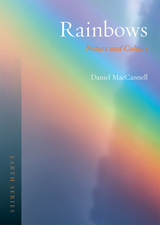
The scientific “discovery” of the rainbow is a remarkable tale, taking in ancient Greece and Rome, medieval Persia, and Islamic Spain. But even as we’ve studied rainbows, adopted their image, and penned odes to them for millennia, rainbows have also been regarded as ominous or even dangerous in myth and religion. In the twentieth century, the rainbow emerged as kitsch, arcing from the musical film version of The Wizard of Oz to 1980s sitcoms and children’s cartoons. Illustrated throughout in prismatic color, MacCannell’s Rainbows explores the full spectrum of rainbows’ nature and meaning, offering insight into what rainbows are and how they work, how we arrived at our current scientific understanding of the phenomenon, and how we have portrayed them in everything from myth to the arts, politics, and popular culture.
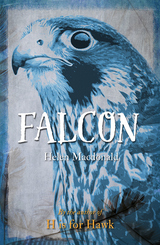
Macdonald dives through centuries and careens around the globe to tell the story of the falcon as it has flown in the wild skies of the natural world and those of our imagination. Mixing history, myth, and legend, she explores the long history of the sport of falconry in many human cultures—from Japan to Abu Dhabi to Oxford; she analyzes the falcon’s talismanic power as a symbol in art, politics, and business; and she addresses the ways we have both endangered and protected it. Along the way we discover how falcons were mobilized in secret military projects; their links with espionage, the Third Reich, the Holy Roman Empire, and space programs; and how they have figured in countless stories of heroism and, of course, the erotic.
Best of all, Macdonald has given us something fresh: a new introduction that draws on all her experience to even further invigorate her cherished subject. The result is a deeply informed book written with the same astonishing lyrical grace that has captivated readers and had everyone talking about this writer-cum-falconer.
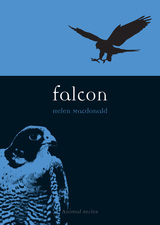
Macdonald presents a cultural and natural history of the falcon that spans the globe and several millennia. Her wide-ranging survey considers the many facets of the falcon, including conservation efforts; the sport of falconry; and the use of falcons in secret military projects by the Third Reich and the U.S. space program. Falcon also explores the rich imagery of the falcon over history, including the veneration of falcons as gods in ancient Egypt, their role in erotic stories, and even the use of falcons in advertising to promote photocopiers and jet planes.
Filled with illustrations and a wealth of fascinating facts, Falcon will be an enjoyable guide for ornithologists, amateur birdwatchers, and nature lovers alike.
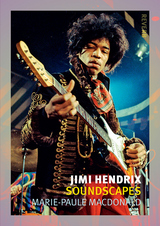
Macdonald follows Hendrix from the Pacific Northwest to the California coast to New York City, from his musical beginnings as a youth in Seattle to his launch, touring career, and up until his last weeks in London. She charts the surroundings of a genuine inner-city dweller, a nighthawk and wanderer who roamed the streets and alleys of everyday neighborhoods and haunted seedy basement bars and intimate clubs—as performer or audience member. She explores how the rumble, uproar, babble, and discord of urban life inspired Hendrix to incorporate noise into his powerful repertoire. Tracking the variety of places where Hendrix played—from open-air stages to dilapidated ballrooms—she shows how space eventually became a process, as Hendrix would eventually commission an architect and sound engineer to build an urban recording studio that would capture the reverberation, bounce, sustain, and echo that he heard and played.
Crackling with the electrifying sound of explosive creativity, Jimi Hendrix explores place and space to offer fascinating new insight into Hendrix’s resounding talent.
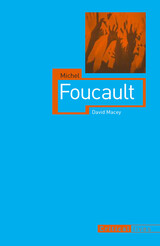
There is no better thinker than Foucault with which to begin the "Critical Lives" series. Though reticent about his personal life for most of his career, Foucault, in the last years of his life, changed his stance on the relationship between the personal and the intellectual and began to speak of an "aesthetics of existence" in which "the life" and "the work" become one. David Macey, a renowned expert on Foucault, demonstrates that these contradictions make it possible to relate Foucault's work to his life in an original and exciting way. Exploring the complex intellectual and political world in which Foucault lived and worked, and how that world is reflected in his seminal works, Macey paints a portrait of Foucault in which the thinker emerges as a brilliant strategist, one who-while fiercely promoting himself as a maverick-aligned himself with particular intellectual camps at precisely the right moments.
Michel Foucault traces the philosopher's career from his comfortable provincial
background to the pinnacle of the French academic system, paying careful attention to
the networks of friendships and the relations of power that sustained Foucault's
prominence in the academy. In an interview in 1966, Foucault said, "One ought to read
everything, study everything. In other words, one must have at one's disposal the general
archive of a period at a given moment." It is precisely this archive that Macey restores
here, accessibly relating Foucault's works to the particular context in which they were
given form.
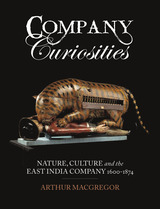
For a time, the East India Company’s own India Museum in London led the way in presenting their findings and establishing for a larger public the characteristic features of a subcontinent that would become the heart of Britain’s worldwide empire. Later, when the Great Exhibition and its successors redefined the style and the scale of presentation of the world’s commercial and industrial processes, the Company’s talented curators (now under their new masters, the India Office) continued to play a key role in articulating these materials. Meanwhile, Company employees returning from years of service diffused a taste for all things Indian. Superbly illustrated, Company Curiosities reveals how these diverse players invented the look and feel of India for those who had never ventured abroad.
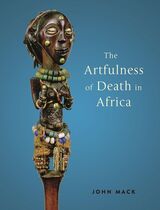
This book is a unique survey of the artful nature of funerals in Africa. Drawing on a wide range of historical, anthropological, archaeological, art historical, and literary sources, John Mack charts the full range of African funereal art, highlighting examples from across the continent and from ancient times to today. Featuring abundant illustrations—some of which have never been published before—The Artfulness of Death in Africa is essential reading for those interested in African art, culture, society, and history.
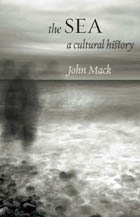
“There is nothing more enticing, disenchanting, and enslaving than the life at sea,” wrote Joseph Conrad. And there is certainly nothing more integral to the development of the modern world. In The Sea: A Cultural History, John Mack considers those great expanses that both unite and divide us, and the ways in which human beings interact because of the sea, from navigation to colonization to trade. Much of the world’s population lives on or near the cost, and as Mack explains, in a variety of ways, people actually inhabit the sea.
The Sea looks at the characteristics of different seas and oceans and investigates how the sea is conceptualized in various cultures. Mack explores the diversity of maritime technologies, especially the practice of navigation and the creation of a society of the sea, which in many cultures is all-male, often cosmopolitan, and always hierarchical. He describes the cultures and the social and technical practices characteristic of seafarers, as well as their distinctive language and customs. As he shows, the separation of sea and land is evident in the use of different vocabularies on land and on sea for the same things, the change in a mariner’s behavior when on land, and in the liminal status of points uniting the two realms, like beaches and ports. Mack also explains how ships are deployed in symbolic contexts on land in ecclesiastical and public architecture. Yet despite their differences, the two realms are always in dialogue in symbolic and economic terms.
Casting a wide net, The Sea uses histories, maritime archaeology, biography, art history, and literature to provide an innovative and experiential account of the waters that define our worldly existence.
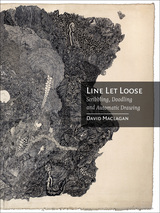
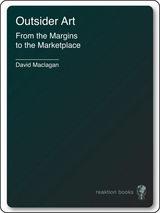
The term outsider art has been used to describe work produced exterior to the mainstream of modern art by certain self-taught visionaries, spiritualists, eccentrics, recluses, psychiatric patients, criminals, and others beyond the perceived margins of society. Yet the idea of such a raw, untaught creativity remains a contentious and much-debated issue in the art world. Is this creative instinct a natural, innate phenomenon, requiring only the right circumstances—such as isolation or alienation—in order for it to be cultivated? Or is it an idealistic notion projected onto the art and artists by critics and buyers?
David Maclagan argues that behind the critical and commercial hype lies a cluster of assumptions about creative drives, the expression of inner worlds, originality, and artistic eccentricity. Although outsider art is often presented as a recent discovery, these ideas, Maclagan reveals, belong to a tradition that goes back to the Renaissance, when the modern image of the artist began to take shape. In Outsider Art, Maclagan challenges many of the current opinions about this increasingly popular field of art and explores what happens to outsider artists and their work when they are brought within the very world from which they have excluded themselves.
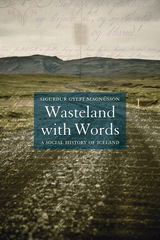
Iceland is an enigmatic island country marked by contradiction: it’s a part of Europe, yet separated from it by the Atlantic Ocean; it’s seemingly inhospitable, yet home to more than 300,000. Wasteland with Words explores these paradoxes to uncover the mystery of Iceland.
In Wasteland with Words Sigurdur Gylfi Magnússon presents a wide-ranging and detailed analysis of the island’s history that examines the evolution and transformation of Icelandic culture while investigating the literary and historical factors that created the rich cultural heritage enjoyed by Icelanders today. Magnússon explains how a nineteenth-century economy based on the industries of fishing and agriculture—one of the poorest in Europe—grew to become a disproportionately large economic power in the late twentieth century, while retaining its strong sense of cultural identity. Bringing the story up to the present, he assesses the recent economic and political collapse of the country and how Iceland has coped. Throughout Magnússon seeks to chart the vast changes in this country’s history through the impact and effect on the Icelandic people themselves.
Up-to-date and fascinating, Wasteland with Words is a comprehensive study of the island’s cultural and historical development, from tiny fishing settlements to a global economic power.
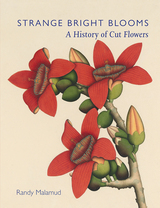
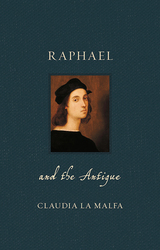
In Raphael and the Antique, Claudia La Malfa gives a full account of Raphael’s prodigious career, from central Italy when he was seventeen years old, to Perugia, Siena, and Florence, where he first met with Leonardo and Michelangelo, to Rome where he became one of the most feted artists of the Renaissance. This book brings to light Raphael’s reinvention of classical models, his draftsmanship, and his concept of art—ideas he pursued and was still striving to perfect at the time of his death in 1520 at the young age of thirty-seven.
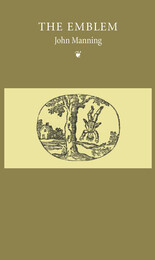
John Manning's book charts the rise and evolution of the emblem from its earliest manifestations to its emergence as a genre in its own right in the sixteenth century, and then through its various reinventions to the present day. The seventeenth century saw the development of new emblematic forms and sub-genres, and the sharpening of the form for the purpose of social satire. When the Jesuits appropriated the emblem, producing enormous quantities of material, a further dimension of moral seriousness was introduced, alongside a concentration of emblematic "wit". The emblem later came to be directed increasingly at young people and children; in particular, William Blake adopted a fresh attitude towards ideas of the child and childishness. Since then, reprints of 17th-century emblem books have been produced with new plates, and writers and artists from Robert Louis Stevenson to Ian Hamilton Finlay have used emblems in new and subversive ways.


The Happiness Paradox examines how this modern obsession has evolved. Ziyad Marar shows how the state of mind we seek remains highly elusive, and much of the energy devoted to searching for happiness is wasted or even self-defeating. The author argues that happiness is a deceptively simple idea that will always be elusive because it is based on a paradox: the conflict between feeling good while simultaneously being good. It is the conflict, for example, between the desire to break rules, for adventure or self-expression, and the need to follow them to gain the approval of society; these tensions permeate what Freud called the two central parts of a happy life: love and work.
Drawing on a wide and varied range of sources – from psychology, philosophy, history, popular novels, television and films – this book will engage all those who are looking for meaning within their lives. It challenges the conventional search for happiness, while suggesting a bolder way to live with one of the central paradoxes of our time.


This book exposes the history and the future of the Wagner Group, Russia’s notorious and secretive mercenary army, revealing details of their operations never documented before. Using extensive leaks, first-hand accounts, and the byzantine paper trail left in the group’s wake, Jack Margolin traces the Wagner Group from its roots as a battlefield rumor to a private military enterprise tens of thousands–strong that eventually comes to threaten Putin himself. He follows individual commanders and foot soldiers within the group as they fight in Ukraine, Syria, and Africa, sometimes alongside fellow military contractors from the United Kingdom and the United States. He shows Wagner mercenaries committing atrocities, plundering oil, diamonds, and gold, and changing the course of conflicts from Europe to Africa in the name of the Kremlin’s strategic aims.
In documenting the Wagner Group’s story up to the dramatic demise of its chief director, Evgeniy Prigozhin, Margolin demonstrates what the Wagner Group represents for not only the future of Putin’s political system but also the privatization of war.
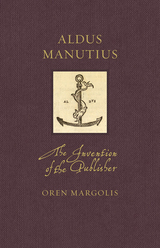
Aldus Manutius is perhaps the greatest figure in the history of the printed book: in Venice, Europe’s capital of printing, he invented the italic type and issued more first editions of the classics than anyone before or since, as well as Hypnerotomachia Poliphili, the most beautiful and mysterious printed book of the Italian Renaissance.
This is the first monograph in English on Aldus Manutius in over forty years. It shows how Aldus redefined the role of a book printer, from mere manual laborer to a learned publisher. As a consequence, Aldus participated in the same debates as contemporaries such as Leonardo da Vinci and Erasmus of Rotterdam, making this book an insight into their world too.
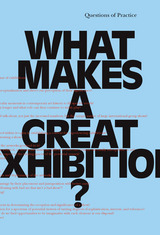
For better or worse, museums are changing from forbidding bastions of rare art into audience-friendly institutions that often specialize in “blockbuster” exhibitions designed to draw crowds. But in the midst of this sea change, one largely unanswered question stands out: “What makes a great exhibition?” Some of the world’s leading curators and art historians try to answer this question here, as they examine the elements of a museum exhibition from every angle.
What Makes a Great Exhibition? investigates the challenges facing American and European contemporary art in particular, exploring such issues as group exhibitions, video and craft, and the ways that architecture influences the nature of the exhibitions under its roof. The distinguished contributors address diverse topics, including Studio Museum in Harlem director Thelma Golden’s examination of ethnically-focused exhibitions; and Robert Storr, director of the 2007 Venice Biennale and formerly of the Museum of Modern Art, on the meaning of “exhibition and “exhibitionmaker.”
A thought-provoking volume on the practice of curatorial work and the mission of modern museums, What Makes A Great Exhibition? will be indispensable reading for all art professionals and scholars working today.
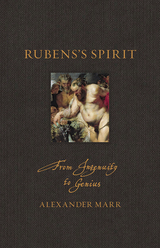

Mars-Jones answers the questions that no other critic has even bothered to ask. What is Twister really about? How many Steven Spielbergs are there? (Spoiler: he counts thirteen). How many of them are worth anything? Who had the greatest slow-burn career in the movies? (Clue: he taught Montgomery Clift how to roll a cigarette.) And which science-fiction film features the most haunting use of slime? Funny, combative, and revealing, Second Sight is a celebration of the artform that maintains the strongest hold on the modern imagination.

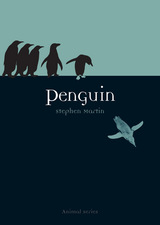
A captivating natural and cultural history, Penguin will be an essential addition to the bookshelves of penguin fans everywhere.

Linking Bruno’s trial to later confrontations between the Inquisition and Galileo in 1616 and 1633, Martínez shows how some of the same Inquisitors who judged Bruno challenged Galileo. In particular, one clergyman who authored the most critical reports used by the Inquisition to condemn Galileo in 1633 immediately thereafter wrote an unpublished manuscript in which he denounced Galileo and other followers of Copernicus for their beliefs about the universe: that many worlds exist and that the Earth moves because it has a soul. Challenging the accepted history of astronomy to reveal Bruno as a true innovator whose contributions to the science predate those of Galileo, this book shows that is was cosmology, not theology, that led Bruno to his death.
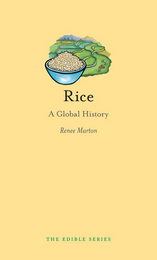
Examining the early years of rice’s burgeoning popularity, Marton shows that trade of the grain was driven by profit from both high status export rice and the lower-quality versions that fed countless laborers. In addition to urbanization and the increase in marketing and advertising, she reveals that rice’s rise to supremacy also came through its consumption by slave, indentured servant, and immigrant communities. She also considers the significance rice has in cultural rituals, literature, music, painting, and poetry. She even shows how the specific rice one consumes can have great importance in distinguishing one’s identity within an ethnic group. Chock full of delicious recipes from across the globe, Rice is a fascinating look at how this culinary staple has defined us.
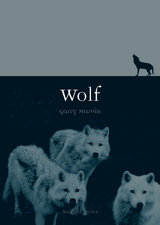

By turns a scientific, feminist, and economic critique, this book gleefully attacks received wisdom about the dangers of processed food. Anastacia Marx de Salcedo argues that, in fact, most processed foods are relatively healthy and that their consumption is an undisputed boon to women’s equality—since the burdens of cooking disproportionately fall on women. In de Salcedo’s account, processed foods take too much blame for the negative effects of modern sedentary life, and alternative food systems are doomed to economic dysfunction. Ultimately, de Salcedo embraces the preserved foods in her pantry and encourages the reader to do the same.
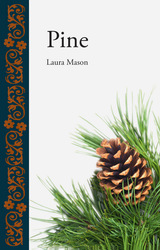
Since the pine tree is able to sprout after forest fires, on mountainsides, and in semi-desert climes, it is no surprise that the ever-resilient tree signifies longevity, wisdom, and immortality. From the pine cone staffs carried by the worshippers of Bacchus in the classical world to their role in the movement to establish national parks in nineteenth-century North America, pine trees and their symbolism run deep in cultures around the globe. In Pine, Laura Mason explores the many ways pines have inspired and been used by people throughout history.

From marzipan pigs and nutty nougat to bubblegum and bonbons, Sweets and Candy looks beneath the glamour and sparkle to explore the sticky history of confectionary. Methods for making sweets can be traced back to the importance of sugar in Arabic medicine and the probable origin of this practice in ancient India—a place where sweetness is still important for both humans and gods. Gorging on gobstoppers from these early candy antecedents to modern-day delectables, Laura Mason describes the bewildering and fascinating ways in which different cultures have made, consumed, valued, and adored sweets throughout history. Featuring a selection of mouthwatering illustrations and scrumptious recipes to try at home, this global candy trail will delight sweet-toothed foodies and history buffs everywhere.
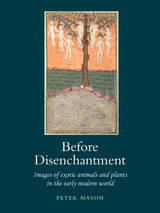
Imagine barnacle geese—creatures that begin life as leaves on a tree growing above water, but turn into small birds as soon as they fall in. Or the Lamb of Tartary that gestates inside a large gourd-like fruit. These are just some of the animal and plant hybrids imagined by early modern explorers and artists to describe unfamiliar flora and fauna.
In Before Disenchantment, Peter Mason explores how naturalists grappled with the problem of representing exotic plants and animals, turning an analytic eye on the sketches of German adventurer Caspar Schmalkalden, the skilled artistic renderings of Peter Paul Rubens, the observations of Dutch beachcomber Adriaen Coenen, and the antiquarian pursuits of Nicola Fabri de Peiresc, among others.
Featuring one hundred illustrations of these unusual and captivating creatures—from camel-sheep to races of monopods and red-haired dwarves—Before Disenchantment goes beyond orthodox histories of scientific illustration and champions a sense of wonder often lost in the modern world.
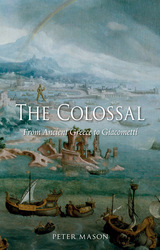
Combining fascinating detail with a rigorous account that spans three millennia, The Colossal argues that the artist who best understood and tapped into the kolossos was Alberto Giacometti. Mason shows that the Swiss sculptor and painter’s work articulated themes of death and mourning in ways rarely seen since the art of archaic Greece, themes most evident in his enigmatic work, The Cube. From the monolithic sculptures of long-dead civilizations to Giacometti’s imposing and unsettling heads, The Colossal is an innovative book that traces unexplored thematic threads through visual history.
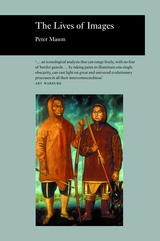
Mason's fascinating study teases out some of the implications of these particular cases to discover a concept of the image that is both primary and can truly be said to have a life of its own.
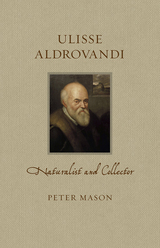
The Bolognese naturalist Ulisse Aldrovandi was a prolific writer, polymath, and prodigious collector who amassed the largest collection of naturalia in sixteenth-century Europe, as well as hundreds of colored drawings detailing them. Many of these drawings found their way into his illustrated publications, most of which were published posthumously.
This book provides a concise yet comprehensive portrait of Aldrovandi, paying particular attention to two aspects: the role that the newly discovered continent of America played in his research interests, and his study of abnormalities of physiological development in organisms. Peter Mason gives insight into Aldrovandi’s fascinating life, his early work on antiquities, his natural history and other collecting activities, his network of correspondents and patrons, and the influence and legacy of his collection and publications.

The chair—you’re likely sitting in one right now. Yet, despite its common presence in offices, restaurants, and homes, we very rarely stop to think about the origins of the chair and its place in culture. After all, the human body is actually more suited to sitting on the ground than on a chair; and as a result, chairs often cause back problems. Nonetheless, in Western culture, as Anne Massey explains, the chair is an object that marks our place in the modern world.
Massey explores how, particularly in the last hundred years, the chair has become a revered object of design. Certain chairs have become iconic—like the Eames Lounge chair and Verner Panton’s S Chair, which are photographed, exhibited in art museums, and slavishly copied by cheaper models. Other chairs have reached iconic status simply through their everydayness—think of Van Gogh’s chair or the way Shaker chairs have become emblematic of a simpler and purer lifestyle. Massey further examines how chairs have been crafted, from local to global manufacture. In doing so she elucidates the meaning of the chair in contemporary culture, as well as the development, design, and manufacture of this ubiquitous object.
Drawing on design, art, popular culture, and personal experience, Chair is an engaging and informative biography of this everyday object and will appeal to anyone interested in why we choose to sit on the chairs we do.

Brexit thrust long fraught debates about “Englishness” and the idea of England into the spotlight. About England explores imaginings of English identity since the 1960s in politics, geography, art, architecture, film, and music. David Matless reveals how the national is entangled with the local, the regional, the European, the international, the imperial, the post-imperial, and the global. He also addresses physical landscapes, from the village and country house to urban, suburban, and industrial spaces, and he reflects on the nature of English modernity. In short, About England uncovers the genealogy of recent cultural and political debates in England, showing how many of today’s social anxieties developed throughout the last half-century.

England’s Green explores how environmental concerns have shaped and reflected English national identity since the 1960s. From agriculture to leisure, climate change, folklore, archaeology, and religion, David Matless shows how national environmental debates connect to the local, regional, global, and postcolonial worlds. Moving across a breadth of material including government policy, popular music, ecological polemic, and television comedy, England’s Green shows the richness and complexity of English environmental culture. Along the way, Matless tracks how today’s debates over climate and nature, land, and culture, have been molded by events over the past sixty years.
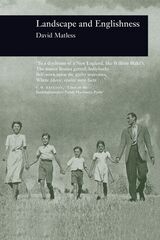
Landscape and Englishness is extensively illustrated and draws on a wide range of material - topographical guides, health manuals, paintings, poetry, architectural polemic, photography, nature guides and novels. The author first examines the inter-war period, showing how a vision of Englishness and landscape as both modern and traditional, urban and rural, progressive and preservationist, took shape around debates over building in the countryside, the replanning of cities, and the cultures of leisure and citizenship. He concludes by tracing out the story of landscape and Englishness down to the present day, showing how the familiar terms of debate regarding landscape and heritage are a product of the immediate post-war era, and asking how current arguments over care for the environment or expressions of the nation resonate with earlier histories and geographies.
" ... cultural history at its best, subtle, multi-layered and full of new ideas and insights ... this book is a 'must'."—Contemporary British History
" ... creates a convincing portrait of the changing meanings of the English landscape in the twentieth century."—Times Literary Supplement
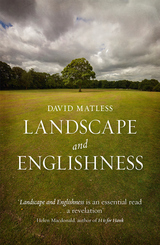
Matless examines a wide range of material, including topographical guides, health manuals, paintings, poetry, architectural polemics, photography, nature guides, and novels. Taking readers to the interwar period, he explores how England negotiated the modern and traditional, the urban and rural, the progressive and preservationist, in its decisions over how to develop the countryside, re-plan cities, and support various cultures of leisure and citizenship. Tracing the role of landscape to Englishness from then up until the present day, he shows how familiar notions of heritage in landscape are products of the immediate post-war era, and he unveils how the present always resonates with the past.
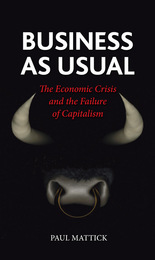
The recent global economic downturn has affected nearly everyone in every corner of the globe. Its vast reach and lingering effects have made it difficult to pinpoint its exact cause, and while some economists point to the risks inherent in the modern financial system, others blame long-term imbalances in the world economy. Into this debate steps Paul Mattick, who, in Business as Usual, explains the global economic downturn in relation to the development of the world economy since World War II, but also as a fundamental example of the cycle of crisis and recovery that has characterized capitalism since the early nineteenth century.
Mattick explains that today’s recession is not the result of a singular financial event but instead is a manifestation of long-term processes within the world economy. Mattick argues that the economic downturn can best be understood within the context of business cycles, which are unavoidable in a free-market economy. He uses this explanation as a springboard for exploring the nature of our capitalist society and its prospects for the future.
Although Business as Usual engages with many economic theories, both mainstream and left-wing, Mattick’s accessible writing opens the subject up in order for non-specialists to understand the current economic climate not as the effect of a financial crisis, but as a manifestation of a truth about the social and economic system in which we live. As a result the book is ideal for anyone who wants to gain a succinct and jargon-free understanding of recent economic events, and, just as important, the overall dynamics of the capitalist system itself.
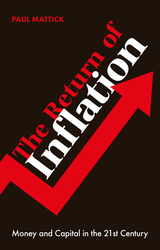
The last year has seen the return of inflation as a preoccupation of political decision-makers, economists, and the general public. After two decades of wondering why inflation was so low, despite vast economic stimulus, economists were surprised by the recent surge in price increases. Despite disagreement about what exactly is happening in the economy, there is unanimity in one belief: slowing growth to control inflation. To focus on inflation’s return, Paul Mattick looks at both the past and present, placing current events in the context of capitalism’s history. Exploring the nature of money itself, he provides a concise, jargon-free understanding of recent inflation as well as official efforts to control it, illuminating the state of our contemporary economy.
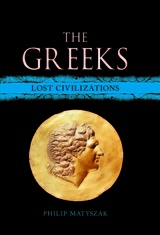
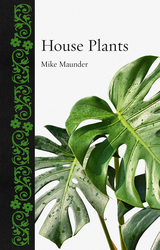
Our penchant for keeping houseplants is an ancient practice dating back to the Pharaohs. House Plants explores the stories behind the plants we bring home and how they were transformed from wild plants into members of our households.
A billion-dollar global industry, house plants provide interaction with nature and contribute to our health, happiness, and well-being. They also support their own miniature ecosystems and are part of the home biome.
Featuring many superb illustrations, House Plants explores both their botanical history and cultural impact, from song (Gracie Fields’s “Biggest Aspidistra in the World”), literature (Orwell’s Keep the Aspidistra Flying), and cinema (Audrey II in Little Shop of Horrors) to fashion, technology, contemporary design, and painting.

Exploring the astonishing scope of Sontag’s life and work, Maunsell traces her growth during her intellectual career at Chicago, Oxford, and the Sorbonne. He discusses her short-lived marriage to Philip Rieff at seventeen, the birth of her son, and her subsequent relationships with women. As Maunsell follows the extraordinary arc of her life, he delves into her literary life in New York in the 1960s; travels with her to Hanoi, Cuba, and China; and surveys her work in Sweden and France in the 1970s, where she turned to filmmaking. Maunsell concludes by examining her miraculous rebirth as a novelist and critic in the 1980s and ’90s after her diagnosis with cancer in the mid-1970s.
Providing a full picture of Sontag as a private person and public figure, this concise biography casts new light on this pivotal figure in literary and cultural history.
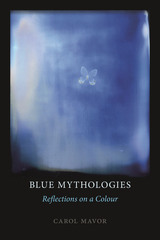
The blues of Blue Mythologies include those present in the world’s religions, eggs, science, slavery, gender, sex, art, the literary past, and contemporary film. Carol Mavor’s engaging and elegiac readings in this beautifully illustrated book take the reader from the blue of a newborn baby’s eyes to Giotto’s frescoes at Padua, and from the films of Derek Jarman and Krzysztof Kiéslowski to the islands of Venice and Aran.
In each example Mavor unpicks meaning both above and below the surface of culture. In an echo of Roland Barthes’s essays in Mythologies, blue is unleashed as our most familiar and most paradoxical color. At once historical, sociological, literary, and visual, Blue Mythologies gives us a fresh and contemplative look into the traditions, tales, and connotations of those somethings blue.
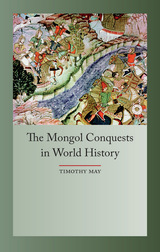

In this comprehensive global history, Alan Mayne explores the evolution and meaning of the word “slum,” from its origins in London in the early nineteenth century to its use as a slur against the favela communities in the lead-up to the Rio Olympics in 2016. Mayne shows how the word slum has been extensively used for two hundred years to condemn and disparage poor communities, with the result that these agendas are now indivisible from the word’s essence. He probes beyond the stereotypes of deviance, social disorganization, inertia, and degraded environments to explore the spatial coherence, collective sense of community, and effective social organization of poor and marginalized neighborhoods over the last two centuries.
In mounting a case for the word’s elimination from the language of progressive urban social reform, Slums is a must-read book for all those interested in social history and the importance of the world’s vibrant and vital neighborhoods.
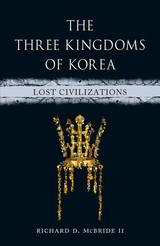
Korea’s Three Kingdoms period is a genuine “lost civilization,” during which ancient realms vied for supremacy during the first millennium CE. Nobles from this period’s feuding states adopted and adapted Buddhism and Confucianism through interactions with early medieval Chinese dynasties. It was not until the mid-seventh century that the aristocratic Silla state, with the assistance of the mighty Chinese Tang empire, unified the Three Kingdoms of Korea by conquering the kingdoms of Koguryo and Paekche. Weaving together legends of ancient kings with the true histories of monks, scholars, and laypeople, this book sheds new light on a foundational period that continues to shape Korean identity today.

This book is the first history of medieval European anatomical images. Richly illustrated, The Art of Anatomy in Medieval Europe explores the many ways in which medieval surgeons, doctors, monks, and artists understood and depicted human anatomy. Taylor McCall refutes the common misconception that Renaissance artists and anatomists such as Leonardo da Vinci and Andreas Vesalius were the fathers of anatomy who performed the first human dissections. On the contrary, she argues that these Renaissance figures drew upon centuries of visual and written tradition in their works.
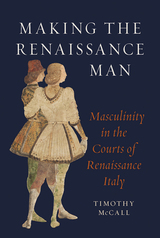
Making the Renaissance Man explores the images, objects, and experiences that fashioned men and masculinity in the courts of fifteenth-century Italy. Across the peninsula, Italian princes fought each other in fierce battles and spectacular jousts, seduced mistresses, flaunted splendor in lavish rituals of knighting, and demonstrated prowess through the hunt—all ostentatious performances of masculinity and the drive to rule. Hardly frivolous pastimes, these activities were essential displays of privilege and virility; indeed, violence underlay the cultural veneer of the Italian Renaissance. Timothy McCall investigates representations and ideals of manhood in this time and provides a historically grounded and gorgeously illustrated account of how male identity and sexuality proclaimed power during a century crucial to the formation of Early Modern Europe.
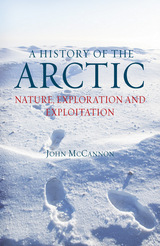
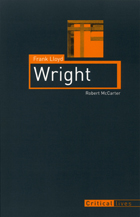
McCarter examines here how Wright aspired to influence America’s evolving democratic society by the challenges his buildings posed to traditional views of private and public space. He investigates Wright’s relationships with key leaders of art, industry, and society, and how their views came to have concrete significance in Wright’s work and writings. Wright argued that architecture should be the “background or framework” for daily life, not the “object,” and McCarter dissects how and why he aspired to this and other ideals, such as his belief in the ethical duty of architects to improve society and culture.
A penetrating study of the foremost pioneer in modern architecture, Frank Lloyd Wright offers a fascinating biographical chronicle that reveals the principles and relationships at the base of Wright’s production.

McCarter reveals that we can’t really know a piece of architecture without inhabiting its spaces, and we need to counter our contemporary obsession with exterior views and forms with a renewed appreciation for interiors. He explores how interior space has been integral to the development of modern architecture from the late 1800s to today, and he examines how architects have engaged interior space and its experiences in their design processes, fundamentally transforming traditional approaches to composition. Eloquently placing us within a host of interior spaces, he opens up new ways of thinking about architecture and what its goals are and should be.

The Chinese picture-scroll, a long, horizontal painting or calligraphic work, has been China’s pre-eminent aesthetic form throughout the last two millennia. This first history of the picture-scroll explores its extraordinary longevity and adaptability to social, political, and technological change. The book describes what the picture-scroll demands of a viewer, how China’s artists grappled with its cultural power, and how collectors and connoisseurs left their marks on scrolls for later generations to judge.
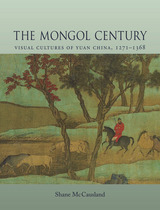
Although in recent years exhibitions have begun to open up the inherent paradoxes of Yuan culture, this is the first book in English to adopt a fully comprehensive approach. It incorporates a broad range of visual media of the East Asia region to reconsider the impact Mongol culture had in China, from urban architecture and design to tomb murals and porcelain, and from calligraphy and printed paper money to stone sculpture. Fresh and invigorating, The Mongol Century explores, in fascinating detail, the visual culture of this brief but captivating era of East Asian history.
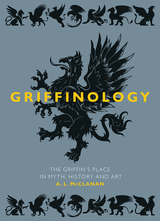
Griffinology is a fascinating exploration of the mythical creature’s many depictions in human culture. Drawing on a wealth of historical and literary sources, this book shows how the griffin has captured the imagination of people for over five thousand years, representing power, transcendence, and even divinity. It explores the history and symbolism of griffins in art, from their appearances in ancient Egyptian magic wands to medieval bestiaries, and from medieval coats of arms to modern corporate logos. The use of the griffin as a symbol of power and protection is surveyed throughout history and into modern times, such as in the Harry Potter series. Beautifully illustrated, this book should appeal to all those interested in monsters, magic, and the mystical, as well as art and history.

This book is a concise survey of the life of the Florentine painter Piero di Cosimo (1462–1522) within his social and cultural surroundings. Delving into the artist’s deliberately idiosyncratic life, the book shows how di Cosimo chose to live in squalor—eating nothing but boiled eggs cooked fifty at a time in his painting glue. Sarah Blake McHam shows how the artist became a favorite among sophisticated patrons eager for pagan artworks featuring Greco-Roman mythological subjects as well as orthodox, but never ordinary, religious altarpieces and private devotional paintings. The result is a newly accessible introduction to the life of this important Renaissance artist.
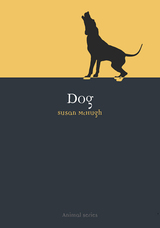
This book unravels the debate about whether dogs are descended from wolves, and moves on to deal with canines in mythology, religion and health, dog cults in ancient and medieval civilizations as disparate as Alaska, Greece, Peru and Persia, and traces correspondences between the histories of dogs in the Far East, Europe, Africa and the Americas. Dog also examines the relatively recent phenomenon of dog breeding and the invention of species, as well as the canine’s role in science fact and fiction; from Laika, the first astronaut, and Pavlov’s famous conditioned dogs, through to science fiction novels and cult films such as A Boy and his Dog.
Susan McHugh shows how dogs today contribute to human lives in a huge number of ways, not only as pets and guide dogs but also as sources of food in Asia, entertainment workers, and scientific and religious objects. Dog reveals how we have shaped these animals over the millennia, and in turn, how dogs have shaped us.
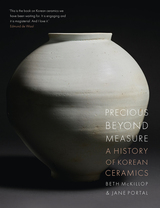
This book is a captivating, richly illustrated history of fired clay in Korea, spanning ancient times to the present day. Drawing on the latest research, this book features a wide range of examples from archaeological sites and museums. In addition, it offers a rare glimpse into the world of modern North Korean ceramics. The authors devote substantial chapters to the refined celadons of the Goryeo and porcelains of the Joseon dynasties (tenth to twentieth centuries), as well as an array of blue-and-white vessels. Merging maritime archaeology, textual evidence, and kiln excavation reports, this overview reveals a remarkable and enduring ceramic tradition in Korea.
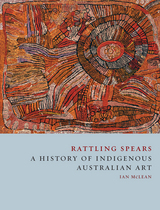
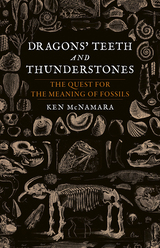
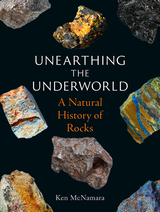
Unearthing the Underworld reveals the hidden world of rocks—the keepers of secrets of past environments, changing climates, and the pulse of life over billions of years. Even the most seemingly ordinary stone can tell us much about the history of this planet, opening vistas of ancient worlds of ice, raging floods, strange unbreathable atmospheres, and prehistoric worlds teeming with life. Remarkably, many types of rocks owe their existence to living organisms—from the remains of bodies of dead animals to rocks formed from rotting ancient forests, or even created by the activity of fungi, bacteria, and viruses. Anything but dull and uninteresting, rocks are intriguing portals that illuminate the secret underworld upon which we live.
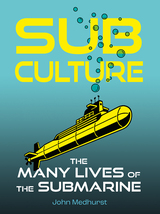
Sub Culture explores the crucial role of the submarine in modern history, its contribution to scientific progress and maritime exploration, and how it has been portrayed in art, literature, fantasy, and film. Ranging from the American Civil War to the destruction of the Russian submarine Kursk in 2000, the book examines the submarine’s activities in the First and Second World Wars, the Cold War, and in covert operations and marine exploration to the present day. Citing the submarine, particularly the nuclear submarine, as both ultimate deterrent and doomsday weapon, Sub Culture examines how its portrayal in popular culture has reinforced, and occasionally undermined, the military and political agendas of the nation-states that deploy it.

Merback compares the images of Christ's Crucifixion with those of the two thieves who met their fate beside Jesus. In paintings by well-known Northern European masters and provincial painters alike, Merback finds the two thieves subjected to incredible cruelty, cruelty that artists could not depict in their scenes of Christ's Crucifixion because of theological requirements. Through these representations Merback explores the ways audiences in early modern Europe understood images of physical suffering and execution. The frequently shocking works also provide a perspective from which Merback examines the live spectacle of public torture and execution and how audiences were encouraged by the Church and the State to react to the experience. Throughout, Merback traces the intricate and extraordinary connections among religious art, devotional practice, bodily pain, punishment, and judicial spectatorship.
Keenly aware of the difficulties involved in discussing images of atrocious violence but determined to make them historically comprehensible, Merback has written an informed and provocative study that reveals the rituals of medieval criminal justice and the visual experiences they engendered.

Globalization as we know it is over. Governments continue to embrace regressive industrial policies, geopolitical tensions are rising higher and higher, and resurgent far-right movements are threatening the foundations of contemporary democracies. In this book, Jamie Merchant traces the roots of this decline beyond the oft-blamed Cold War failures. Instead, Merchant argues that the great political and economic changes of the last decade are due not to globalization but to the long-term decay of the market-based economic order. By historicizing this period of globalization and decline, Endgame illuminates a path forward for both the global economy and international politics.

Merrifield explores the dynamics of Debord's ideas and works, including the groundbreaking Howls for Sade and his 1967 classic, The Society of the Spectacle. Debord understood life as art, Merrifield argues, and through that lens he chronicles Debord's stint as a revolutionary leader in the 1950s and 1960s, his time in Spain and Italy during the 1970s and the reclusive years leading up to his death in 1994.
Dada and Surrealism's legacy and punk rock's god, Guy Debord spun theories on democracy, people, and political power that still resonate today, making Merrifield's concise yet comprehensive study an invaluable resource on one of the foremost intellectual revolutionaries of the twentieth century.


Claudia Mesch analyzes the aspects of Beuys’s works that have most offended audiences, especially the self-woven legend of redemption that many have felt was a dubious and inappropriate fantasy for a former Nazi soldier to engage. As she argues, however, Beuys’s self-mythology confronted post-traumatic life head on, foregrounding a struggle for psychic recovery. Following Beuys’s exhibitions in the 1970s, she traces how he both expanded the art world beyond the established regional centers and paved the way for future artists interested in activism-as-art. Exploring Beuys’s expansive conceptions of what art is and following him into the realms of science, politics, and spirituality, Mesch ultimately demonstrates the ways that his own myth-making acted as a positive force in the Germany’s postwar reckoning with its past.

Both fascinating and frightening, the spider has a rich symbolic presence in the imagination. At once a representative of death, due to its fangs and dangerous poison, the spider can also represent life and creation, because of its intricate web and females who carry sacs of thousands of tiny eggs. In this wide-ranging book, Katarzyna and Sergiusz Michalskiinvestigate the natural history and cultural significance of the spider.
From ancient Greek myth to Dostoyevsky, the authors explore the appearance of spiders in literature and their depictions in art, paying particular attention to the sculptures of Louise Bourgeois. Horror stories, science fiction, folklore, and children’s tales are also investigated, as well as the affliction of arachnophobia and the procedures used to cure it. The association of the spider with women or mothers is explored alongside the role of the spider metaphor in Freudian and Jungian psychoanalysis, and the Michalskis’ in-depth account concludes with a look at the unfavorable portrayal of the sinister spider in film.
A thorough and engaging look at the natural and cultural history of the spider, this book will appeal to anybody who admires or fears this delicate yet dangerous creature.
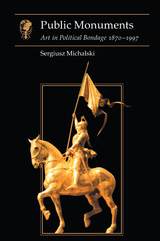
The author shows how, in its golden age – up until 1914 – the public monument served the purpose of both education and legitimization. The French Third Republic, for example, envisaged the monument as a symbol of bourgeois meritocracy. In more recent decades, the public monument has been charged with the task of commemorating and symbolizing one of humankind's most terrible catastrophes - the Holocaust. Today, although the artistic failure of countless European war memorials has signaled the beginning of the demise of the public monument in the West, it continues to flourish elsewhere, commemorating despotic leaders from Kim Il Sung to Saddam Hussein.
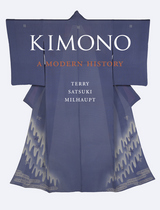
What is the kimono? Everyday garment? Art object? Symbol of Japan? As this book shows, the kimono has served all of these roles, its meaning changing across time and with the perspective of the wearer or viewer.
Kimono: A Modern History begins by exposing the seventeenth- and eighteenth-century foundations of the modern kimono fashion industry. It explores the crossover between ‘art’ and ‘fashion’ in this period at the hands of famous Japanese painters who worked with clothing pattern books and painted directly onto garments. With Japan’s exposure to Western fashion in the nineteenth century, and Westerners’ exposure to Japanese modes of dress and design, the kimono took on new associations and came to symbolize an exotic culture and an alluring female form. In the aftermath of the Second World War, the kimono industry was sustained through government support. The line between fashion and art became blurred as kimonos produced by famous designers were collected for their beauty and displayed in museums, rather than being worn as clothing. Today, the kimono has once again taken on new dimensions, as the Internet and social media proliferate images of the kimono as a versatile garment to be integrated into a range of individual styles.
Kimono: A Modern History, the inspiration for a major exhibition at the Metropolitan Museum of Art in New York,not only tells the story of a distinctive garment’s ever-changing functions and image, but provides a novel perspective on Japan’s modernization and encounter with the West.
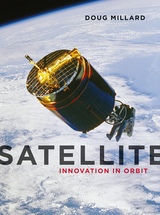
How satellites ever came to be is, in itself, a remarkable story. Telling an astonishing history of engineering experimentation and ingenuity, Millard shows how the Cold War space race made the earliest satellites—ones like Sputnik, Telstar, and Early Bird—household names. He describes how they evolved into cultural signifiers that represented not only our scientific capabilities but our capacity for imagination, our ability to broaden the scope of our vision to the farthest reaches. From there he follows the proliferation of satellites in the second half of the twentieth century, examining their many different forms, how they evolved, all the things they do, what they have enabled, and how they have influenced our popular culture. Ultimately, Millard asks what we can still expect, what sort of space age the satellite has initiated that is yet to be fully realized.
Published in association with the Science Museum, London, this beautifully illustrated book will appeal to any fan of space exploration and technology.

But there’s far more to skunks than their stench, and with this beautifully illustrated entry in Reaktion’s Animal series, Alyce Miller gives these furry scavengers their due. More than being unappreciated, skunks, Miller reveals, have a long history of persecution: killed off as smelly nuisances, they have also been hunted for their fur and, yes, their unique musk, which has found a perhaps unexpected use in perfume. Moving from nature to culture, Miller delves into the long line of skunks that have played parts in literature, film, and folklore, from the antics of Pepe Le Pew to the role of skunks in Native American spiritual beliefs. As growing urban wildlife populations bring humans and skunks ever closer, Miller’s book will help us understand—and appreciate—these beautiful, intriguing, and wholly distinct animals.

Miller’s history ranges widely, from ancient times to the present, exploring all the many ways that we’ve rendered water palatable—from boiling it for tea or distilling it as part of alcoholic beverages to piping it from springs, bubbles and all. He covers the histories of water treatment and supply, belief in its medicinal powers, and much more, all supported by fascinating historical illustrations. As access to fresh water becomes an ever more potent problem worldwide, Miller’s book is a fascinating reminder of our long engagement with this most vital fluid.
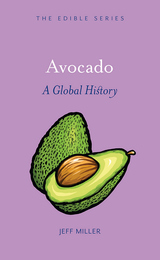
Through lively anecdotes, colorful pictures, and delicious recipes, Jeff Miller explores the meteoric rise of the avocado, from its coevolution with the megaherbivores of the Pleistocene to its acceptance by the Spanish conquistadors in Mexico, to its current dominance of food consumers’ imaginations.

Combining natural, cultural, and environmental history, Walrus explores the intriguing story of an animal that today is on the front lines of conservation debates. John Miller and Louise Miller describe the problems facing walruses even after the twentieth-century bans on nonindigenous walrus hunting—shrinking pack-ice caused by global warming and the exploitation of Arctic oil and gas resources are destroying the animal’s habitat. Wonderfully illustrated with images of walruses in the wild and from art and popular culture, Walrus offers a refreshing account of these large-flippered mammals while also illustrating the ethical dilemmas they embody, from the intensifying conflict between the developed world and indigenous interests to the impact of global warming on arctic animals.

Acknowledged as one of the major sculptors and avant-garde artists of the twentieth century, Constantin Brancusi (1876–1957) was also one of the most elusive, despite his fame. His mysterious nature was not only due to his upbringing in Romania—which, at the time, was still regarded by much of Europe as a backward country haunted by vampires and werewolves—but also because Brancusi was aware that myth and an aura of otherness appealed to the public. His self-mythology remained intact until the publication of Brancusi in 1986 by Romanian artists Alexandre Istrati and Natalia Dumitresco, who made available a small selection of the archive of Brancusi’s correspondence. And in 2003, a comprehensive catalogue, which made the bulk of Brancusi’s private correspondence public for the first time, was published by the Centre Pompidou to accompany a retrospective on Brancusi’s work.
In Constantin Brancusi, Sanda Miller employs these extensive new resources to better assess Brancusi’s life and work in relationship to each other, providing valuable and innovative insights into his relationships with friends, collectors, dealers and lovers. Miller’s perceptive book allows Brancusi to finally take his rightful place among the most important of the intellectual personalities who shaped twentieth-century modernism.
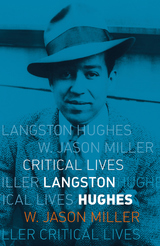
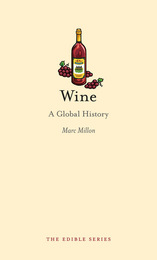

As an economist and political theorist, Rosa Luxemburg created a body of work that still resonates powerfully today. Born in Poland in 1871, she became a revolutionary leader in Berlin, publishing works including Reform or Revolution and The Accumulation of Capital. In this account of Luxemburg’s short yet extraordinary life, Dana Mills examines Luxemburg’s writings, including her own correspondence, to reveal a woman who was fierce in professional battles and loving in personal relationships. What is her legacy today, a hundred years after her assassination in Berlin in 1919 at the age of forty-seven? Luxemburg’s emphasis on humanity and equality and her insistence on revolution give coherence, as this compelling biography illustrates, to a fraught life story and to her colossal economic and political legacy.
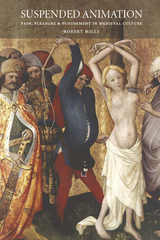
Just as in medieval times, Robert Mills argues, it is the threat of violence—not the reality—that continues to structure our lives. To illustrate this "aesthetics of suspense," Mills draws on extensive and disturbing examples from medieval iconography, contemporary philosophy, and even pornography, ranging from the vivid depictions of Hell in Tuscan frescoes to Billie Holiday's famously wrenching song "Strange Fruit". Mills reveals how these uncomfortable images and texts expose a modern self-deception, and he further explores how medieval images evoked a pleasure revealingly close to that found in modern depictions of sexuality. Suspended Animation also makes a fresh contribution to theoretical debates on pre-modern gender and sexuality. Mills's comprehensive analysis demonstrates that—as wartime prisoner abuse incidents at Abu Ghraib and Guantánamo Bay have recently indicated—our notions of ourselves as not-medieval (that is, civilized) not only fail to prepare us for modern torture and warfare but also lead us into complicity with self-proclaimed moral and civic leaders.
Whether considering a medieval painting of a Christian martyr or the immense popularity of grotesque historical tourist attractions such as the London Dungeons, Suspended Animation argues that images of death and violence are as pervasive today as they were in the Middle Ages, serving as potent reminders of the link between the modern and the medieval era.
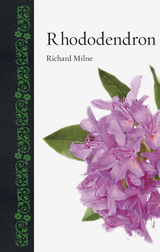
But there is a darker side to these gorgeous flowers. Daphne du Maurier used the red rhododendron as a symbol of blood in her best-selling novel Rebecca, and numerous Chinese folktales link the plant with tragedy and death. It can poison livestock and intoxicate humans, and its narcotic honey has been used as a weapon of war. Rhododendron ponticum has run riot across the British countryside, but the full story of this implacable invader contains many fascinating surprises.
In this beautifully illustrated volume, Richard Milne explores the many ways in which the rhododendron has influenced human societies, relating this to the extraordinary story of the plant’s evolution. Over one thousand species of the plant exist, ranging from rugged trees on Himalayan slopes to rock-hugging alpines, and delicate plants perched on rainforest branches. Milne relays tales of mythical figures, intrepid collectors, and eccentric plant breeders. However much you may think you know about the rhododendron, this charming book will offer something new.
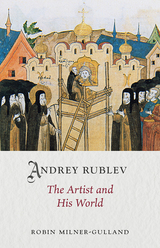
A monk from Moscow, Andrey Rublev (c.1360–c.1430) is heralded as the greatest painter of religious icons and frescos in medieval Russia. Nevertheless, his life remains largely mysterious to historians and devotees alike. In this book, Robin Milner-Gulland provides the first English-language account of the artist’s life as a window into the world of medieval Moscow. Beautifully illustrated with previously unpublished images, Andrey Rublev offers an accessible introduction to the artist’s medieval world and his continuing significance today.
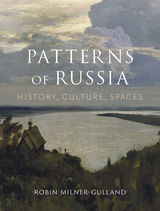
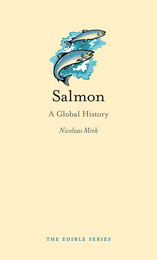

Unquestionably one of the most popular composers of classical music, Sergei Rachmaninoff has not always been so admired by critics. Detractors have long perceived Rachmaninoff as part of an outdated Romantic tradition from a bygone Russian world, aloof from the modernist experimentation of more innovative contemporaries such as Igor Stravinsky.
In this new assessment, Rebecca Mitchell resituates Rachmaninoff in the context of his time, bringing together the composer and his music within the remarkably dynamic era in which he lived and worked. Both in Russia and later in America, Rachmaninoff and his music were profoundly modern expressions of life in tune with an uncertain world. This concise yet comprehensive biography will interest general readers as well as those more familiar with this giant of Russian classical music.
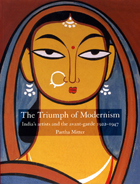
The tumultuous last decades of British colonialism in India were catalyzed by more than the work of Mahatma Gandhi and violent conflicts. The concurrent upheavals in Western art driven by the advent of modernism provided Indian artists in post-1920 India a powerful tool of colonial resistance. Distinguished art historian Partha Mitter now explores in this brilliantly illustrated study this lesser known facet of Indian art and history.
Taking the 1922 Bauhaus exhibition in Calcutta as the debut of European modernism in India, The Triumph of Modernism probes the intricate interplay of Western modernism and Indian nationalism in the evolution of colonial-era Indian art. Mitter casts his gaze across a myriad of issues, including the emergence of a feminine voice in Indian art, the decline of “oriental art,” and the rise of naturalism and modernism in the 1920s. Nationalist politics also played a large role, from the struggle of artists in reconciling Indian nationalism with imperial patronage of the arts to the relationship between primitivism and modernism in Indian art. An engagingly written study anchored by 150 lush reproductions, The Triumph of Modernism will be essential reading for scholars of art, British studies, and Indian history.
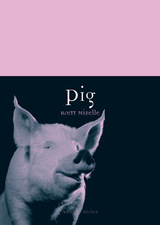
Known as much for their pink curly tails and pudgy snouts as their low-brow choice of diet and habitat, pigs are prevalent in popular culture—from the Three Little Pigs to Miss Piggy to Babe. Today there are more than one billion pigs on the planet, and there are countless representations of pigs and piggishness throughout the world’s cultures.
In Pig, Brett Mizelle provides a richly illustrated and compelling look at the long, complicated relationship between humans and these highly intelligent, sociable animals. Mizelle traces the natural and cultural history of the pig, focusing on the contradictions between our imaginative representation of pigs and the real-world truth of the ways in which pigs are prized for their meat, used as subjects in medical research, and killed in order to make hundreds of consumer products. Pig begins with the evolution of the suidae, animals that were domesticated in multiple regions 9,000 years ago, and points toward a future where pigs and humans are even more closely intertwined as a result of biomedical breakthroughs. Pig both examines the widespread art, entertainment, and literature that imagines human kinship with pigs and the development of modern industrial pork production.
In charting how humans have shaped the pig and how the pig has shaped us, Mizelle focuses on the unresolved contradictions between the fiction and the reality of our relations with pigs.
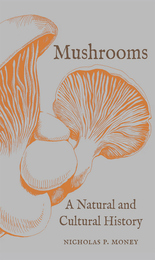
Mushrooms hold a peculiar place in our culture: we love them and despise them, fear them and misunderstand them. They can be downright delicious or deadly poisonous, cute as buttons, or utterly grotesque. These strange organisms hold great symbolism in our myths and legends. In this book, Nicholas P. Money tells the utterly fascinating story of mushrooms and the ways we have interacted with these fungi throughout history. Whether they have populated the landscapes of fairytales, lent splendid umami to our dishes, or steered us into deep hallucinations, mushrooms have affected humanity from the earliest beginnings of our species.
As Money explains, mushrooms are not self-contained organisms like animals and plants. Rather, they are the fruiting bodies of large—sometimes extremely large—colonies of mycelial threads that spread underground and permeate rotting vegetation. Because these colonies decompose organic matter, they are of extraordinary ecological value and have a huge effect on the health of the environment. From sustaining plant growth and spinning the carbon cycle to causing hay fever and affecting the weather, mushrooms affect just about everything we do. Money tells the stories of the eccentric pioneers of mycology, delights in culinary powerhouses like porcini and morels, and considers the value of medicinal mushrooms. This book takes us on a tour of the cultural and scientific importance of mushrooms, from the enchanted forests of folklore to the role of these fungi in sustaining life on earth.
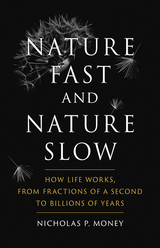
With its poetry, social commentary, and humor, this book will appeal to everyone interested in the natural world.
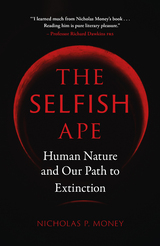
The Selfish Ape is a book about human biology, the intertwined characteristics of our greatness and failure, and the way that we have plundered the biosphere. Written in a highly accessible style, it is a perfect read for those interested in science, human history, sociology, and the environment.
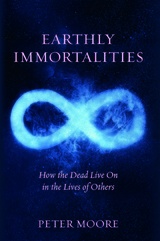
To what extent does the meaning we find in our lives depend upon the assumption there will always be a new generation to continue the human adventure? What would it be like if science were able to extend life indefinitely, and is this something already enshrined in the doctrine of reincarnation? Can we solve our anxieties about mortality by learning that life is worth living precisely because we do not live forever? In a generous and eloquent account, these and more are the questions Earthly Immortalities seeks to answer.
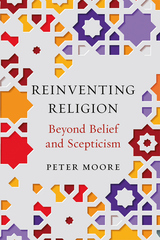
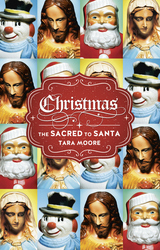
Delving into the long story of this unifying but also divisive holiday, Tara Moore describes the evolution of Christmas and the deep traditions that bind a culture to its version of it. She probes the debates that have long accompanied the season—from questions of the actual date of Christ’s birth to frictions between the sacred and the secular—and discusses the characters associated with the holiday’s celebration, including Saint Nicholas, the Magi, Scrooge, and Krampus. She also explores how customs such as Christmas trees, feasting, and gift giving first emerged and became central facets of the holiday, while also examining how Christmas has been portrayed in culture—from the literary works of Charles Dickens to the yearly bout of holiday films, television specials, traditional carols, and modern tracks. Ultimately, Moore reveals, Christmas’s longevity has depended on its ability to evolve. Packed with illustrations, Christmas is a fascinating look at the holiday we only think we know.

It began with the Beatles’ “Helter Skelter.” It was distilled to its dark essence by Black Sabbath. And it has flourished into a vibrant modern underground, epitomized by Newcastle’s Pigs Pigs Pigs Pigs Pigs Pigs Pigs. This is the evolution of heavy music. The voyage is as varied as it is illuminating: from the lysergic blunt trauma of Blue Cheer to the locked grooves of Funkadelic, the aural frightmares of Faust to the tectonic crush of Sleep, alighting on post-punk, industrial, grunge, stoner rock, and numerous other genres along the way. Ranging from household names to obscure cult heroes and heroines, Electric Wizards demonstrates how each successive phase of heavy music was forged by what came before, outlining a rich and eclectic lineage that extends far beyond the usual boundaries of heavy rock or heavy metal. It extols those who did things differently, who introduced something fresh and exciting into this elemental tradition, whether by design, accident, or sheer chance. In doing so, Electric Wizards weaves an entirely new tapestry of heavy music.
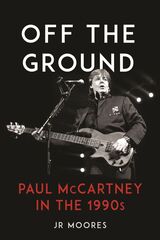
Paul McCartney’s 1990s was an era like no other, perhaps even the most significant decade of his entire career after the 1960s. Following a shakier 1980s, the decade would see McCartney reemerge with greater energy, momentum, and self-belief. JR Moores’s sympathetic but not uncritical new book explores McCartney’s ’90s, with its impressive studio and live albums, colossal tours, unexpected side-projects and imaginative collaborations, forays into classical composition, some new Beatles numbers, and a whole lot more besides. Moores reveals how McCartney’s reputation began to be perceived more generously by the public, and he argues that Macca’s output and activities in the ’90s would uncover more about the person behind them than in any other decade.
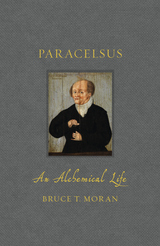
Bringing to light the ideas, diverse works, and major texts of this important Renaissance figure, Bruce T. Moran tells the story of how alchemy refashioned medical practice, showing how Paracelsus’s tenacity and endurance changed the medical world for the better and brought new perspectives to the study of nature.
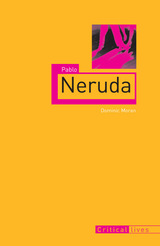
Pablo Neruda (1904–73) is one of Latin America’s best known poets, adored by readers for the passionate love lyrics written during his early years in his native Chile, and respected by critics for the dark, hypnotic verses he composed during his later, solitary years as a diplomat based in the Far East. As Dominic Moran shows in his concise biography of Neruda, rarely have the life and works of a writer been so intimately and dramatically bound up as they are in Neruda.
In Pablo Neruda, Moran takes a detailed and often critical look at this relationship, focusing as much on what the poetry sometimes strategically hides about Neruda the poet, the lover, and the political proselytizer, as what it reveals. Moran describes a life that was marked by an increasingly militant communism, the seeds of which can be traced to Neruda’s experiences in Spain during the early months of the Spanish Civil War. Throughout the 1950s and 1960s, Neruda became a literary torchbearer for the International Left, and he spent his final years campaigning to bring socialism to his beloved Chile. He lived just long enough to see his hero Salvador Allende unseated by Augusto Pinochet’s bloody coup.
Pablo Neruda paints a fascinating picture of one of the most prodigiously gifted literary figures of the twentieth century. It will appeal to fans of Neruda’s verse who wish to learn more about the life behind it, as well as to readers interested in Latin American literature, politics, and history.
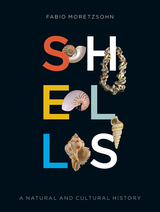
Shells have captivated humans from the dawn of time: the earliest known artwork was made on a shell. As well as containers for food, shells have been used as tools, jewelry, decorations for dwellings, and to bring good luck or to ward off spirits. Many Indigenous peoples have used shells as currency, and in a few places, they still do. This beautifully illustrated book investigates the fascinating scientific and cultural history of shells. It examines everything from pearls—the only gems of animal origin—to how shells’ diverse colors and shapes are formed. And it reveals how shells have inspired artists throughout history, how shells have been used in architecture, and even how shells can be indicators of changing environmental conditions. Also including two essays by shell expert M. G. Harasewych, emeritus curator of gastropods in the Smithsonian’s Department of Invertebrate Zoology, Shells is an authoritative exploration of the deep human connection to these molluscan exoskeletons of sea, lake, land, and stream.
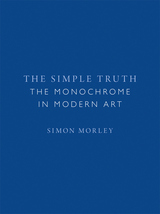
In this illuminating book, Simon Morley unpacks the meanings of the monochrome as it has developed internationally over the twentieth century to today. In doing so, he also explores how artists have understood what they make, how critics variously interpret it, and how art is encountered by viewers.
READERS
Browse our collection.
PUBLISHERS
See BiblioVault's publisher services.
STUDENT SERVICES
Files for college accessibility offices.
UChicago Accessibility Resources
home | accessibility | search | about | contact us
BiblioVault ® 2001 - 2024
The University of Chicago Press









